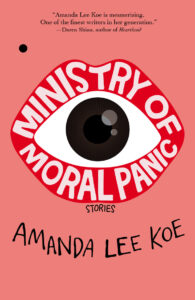
Author: Laura Imai Messina
Genre: Literary Fiction / Grief & Healing / Contemporary Japan
Ideal For: Readers who don’t shy away from sorrow, who believe that the ache of loss can be transmuted into tenderness, and who appreciate stories where silence carries more weight than words—and healing is as much about memory as it is about letting go.
Plot Summary (Spoiler-Free)
From the very first chapter of The Phone Box at the Edge of the World you feel pulled into something both haunting and alive. Messina places us in post-tsunami Japan—an environment scarred by loss, yet stirring with possibility. Her protagonist, Yui, has lost her mother and young daughter to the 2011 disaster. She marks every day from March 11 onward. Then she hears of a “wind phone”—a disconnected phone booth perched in the garden of a house on Whale Mountain (Kujira-yama) where the bereaved come to speak to loved ones who have passed. What follows is less a plot-driven story and more an emotional odyssey: grief, connection, memory, redemption.
It’s a story about the things left unsaid and the distances we carry inside. The phone box becomes more than a gimmick—it becomes metaphor, ritual, anchor. And through it, Messina inscribes a map of pain and hope.
Messina’s Craft: Quiet, Radiant, Full of Spaces
What makes this book extraordinary is the way it honours stillness. Messina doesn’t rush Yui. She lets the grief lie open. She uses fragments—lists of favourite songs, snippets of weathered conversation, the names of dishes Yui once shared with her daughter—to fill the spaces between chapters. The alternation between Yui’s narrative and these smaller “interlude” pages gives the book texture, depth, breath.
There is beauty. But it isn’t pretty. It is quiet, resilient, shaped by acceptance more than triumph.
Themes That Lodge in Your Heart
Grief as Landscape. The tsunami’s devastation isn’t just historical context—it’s the ground Yui walks on. Everything else grows from it: her numb radio-host job in Tokyo, her journey north, the way she speaks—or doesn’t speak—to the booth’s receiver.
Memory and the Unsaid. Messina asks: what do we say when we cannot say? What do we carry when voices disappear? The wind phone invites the characters to speak into air, into memory, into the possibility of being heard.
Connection from the Edge. Yui meets Takeshi, a widower whose daughter has stopped speaking. Their bond is tentative, unexpected—a shared solitude creating new possibility. The “edge of the world” isn’t just the phone box’s remote locale; it’s the edge between living and being held by what was.
Cultural and Spiritual Echoes. The story isn’t Western therapy-formula. It’s rooted in a Japanese-inflected ethos: beyond closure, there is conversation; beyond escape, there is remembrance.
Highlights That Shone
Emotional authenticity. It’s easy to write about loss badly. Messina writes it with restraint and truth—no melodrama, no neat fix—but a sense of movement.
Structure as poem. The interludes between chapters (lists, dialogues, vignettes) give swelling undercurrents.
Cultural immersion without exotica. Messina doesn’t flatten Japanese culture into cliché; she lets it inform setting, mood, grief ritual without over-explaining. The story trusts you to enter. Hope without erasure. The book doesn’t pretend grief disappears. It changes. The phone booth is not a magical fix—but a space of carrying, of finally speaking, of being heard.
A Gentle Caveat (Because Even Love Has Notes)
If you prefer fast-moving plot, high drama, or neat resolutions, this book may feel slow, meditative.
Yes—it asks patience. The romance element rises in the second half, which some readers felt shifted tone. But that doesn’t undercut the value—it simply changes shape.
Final Thoughts
The Phone Box at the Edge of the World earns its five stars because it does what few novels do so successfully: it honours pain without drowning in it, creates space for hope without glossing over truth, and anchors itself in both place and metaphor. This is a book that isn’t another story of overcoming—it’s a story of carrying, of dialogue with absence, and of the possibility that the edge of the world might also be the place where connection begins.
Read it slowly. Let it seep in. It will stay with you.


